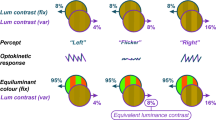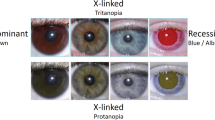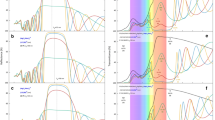Abstract
HAPPENING to be reading out of doors, while the sun was shining on my book, I noticed that patches of weed on the lawn appeared peculiarly conspicuous in their difference of tint from the grass. The same patches of weed close-cropped to the level of the grass were ordinarily scarcely observable from difference of colour. Now, as I looked up from my book—my eyes dazzled with the glare—they appeared to me to have a strong blue tint. My attention thus being drawn to the point, I extended my observations, with the following results, which, if new, will doubtless prove interesting to some of your readers. I found that if the eye was exposed for two or three minutes to the action of a very strong light, by looking at a sheet of white paper, while bright sunshine fell on it, the capacity of the eye for perception of colour was curiously modified, under certain conditions. For example: if, on the instant after the exposure of the eye to strong light, as described—solarisation I will call it—flowers of various colours, placed in a shady part of a room were examined, a pink rose appeared the colour of lavender; dark crimson Sweet William, almost black; magenta Snapdragon, indigo; scarlet Poppy, orange; the eye was, in fact, red-blind. After a minute or two, the eye recovered its normal sensibility to red, and the flowers assumed their natural colour.
This is a preview of subscription content, access via your institution
Access options
Subscribe to this journal
Receive 51 print issues and online access
$199.00 per year
only $3.90 per issue
Buy this article
- Purchase on SpringerLink
- Instant access to full article PDF
Prices may be subject to local taxes which are calculated during checkout
Similar content being viewed by others
Author information
Authors and Affiliations
Rights and permissions
About this article
Cite this article
SWAN, J. Perception of Colour. Nature 26, 246 (1882). https://doi.org/10.1038/026246b0
Issue date:
DOI: https://doi.org/10.1038/026246b0



